Castillo de Santa Bárbara, also known as Castell de Santa Bàrbara, is a fortress from the Muslim era situated in the heart of Alicante. It stands on top of Mount Benacantil, on a striking cliff that rises over 160 meters above the city and the sea. This fortress is one of the most popular attractions in Alicante, offering stunning panoramic views of the city and its surroundings. In this article, we will discuss what it is like to visit Santa Barbara Castle.
Tours & Activities in Alicante
Visiting Santa Barbara Castle: A Must-Do Experience in Alicante
Mount Benacantil: The hill overlooking Alicante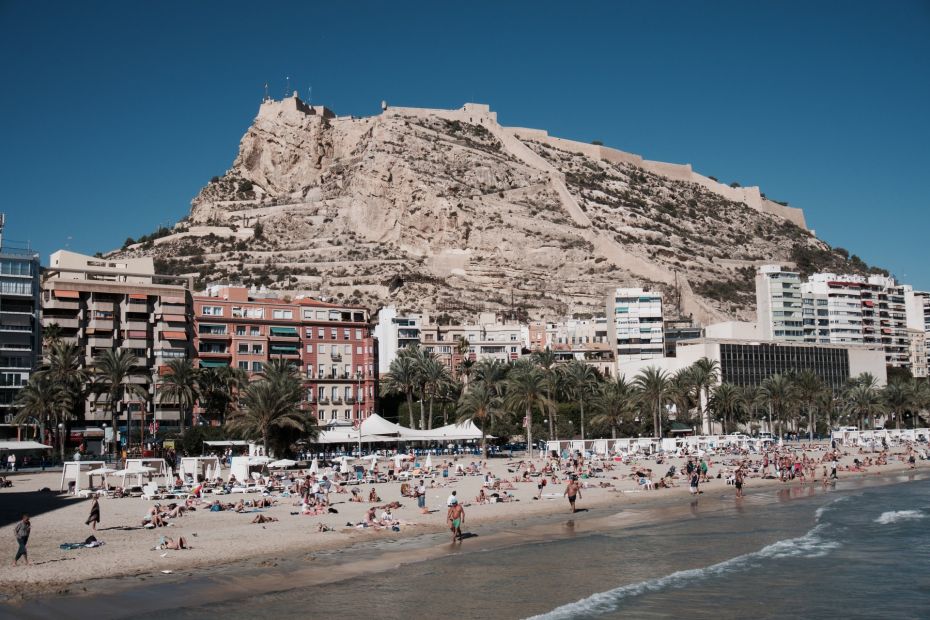
Mount Benacantil is a rocky hill that dominates Alicante’s skyline and represents one of the city’s most characteristic images. At 169 meters high, the mountain has played a fundamental role in the development and protection of Alacant since time immemorial. On its north side, it is covered by pine trees, eucalyptus, and scrub, while on the south side, which overlooks the Mediterranean Sea, the hill is completely barren.
Banu-lQatil, the name given to the formation by the medieval Arab geographer Al-Idrisi, derives from the words pinna (“peak” in Arabic) and laqanti, from the Arabic name for Alicante.
The Benecantil is one of the most outstanding natural areas and one of the most visited attractions in Alicante. The mountain hosts, in addition to the castle of Santa Barbara, the Parc de l’Ereta, the neighborhoods of Santa Cruz, San Roque, San Antón, and Raval Roig, and the rock formation “Cara del Moro.”
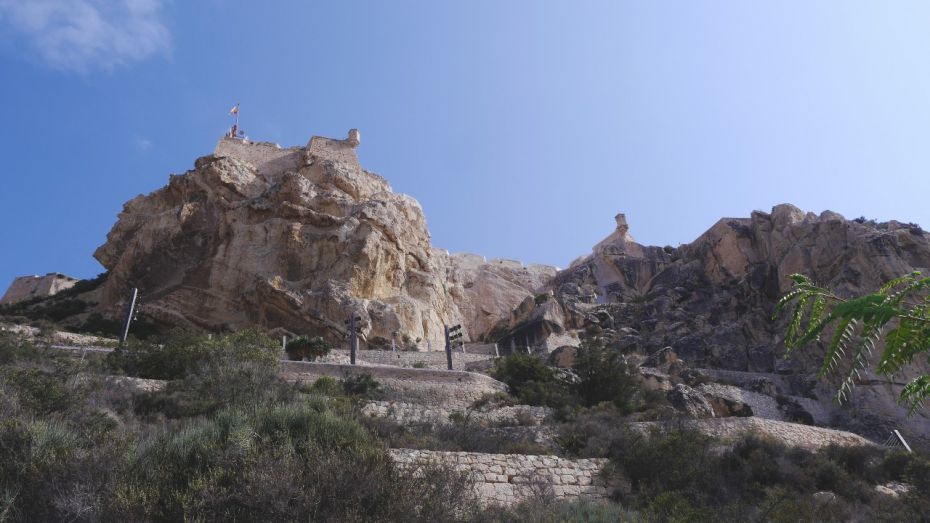
Avenida Jaime II, a continuation of Avenida de Alfonso el Sabio, crosses the north of the hill, which is also crossed by Castle Road and several trails that connect its main panoramic viewpoints.
About the Castle
The Castle of Santa Barbara, with its eleven centuries of history, is the oldest building in Alicante. Although prehistoric, Iberian and Roman artifacts have been found on the slopes of Benacantil, the origins of the fortress that crowns it date back to the ninth century, coinciding with the incorporation of Alicante into al-Andalus.
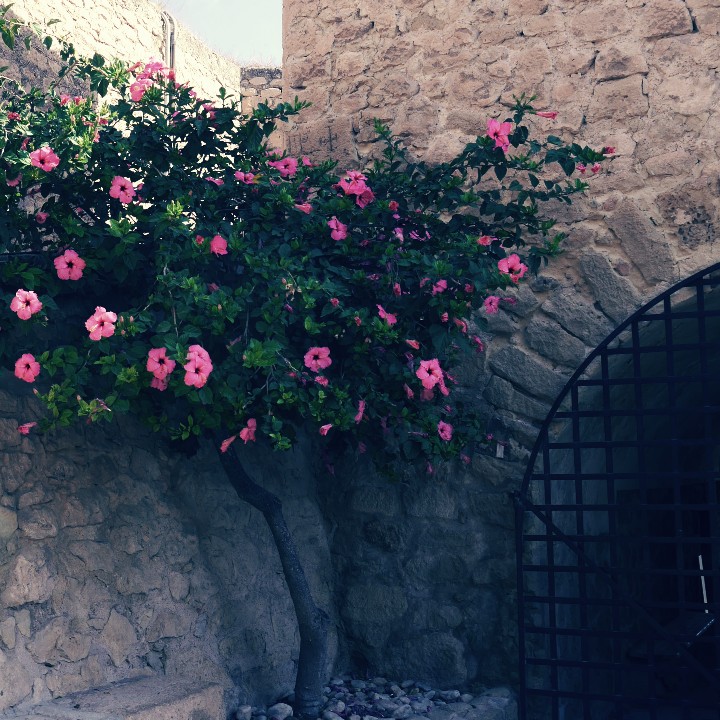
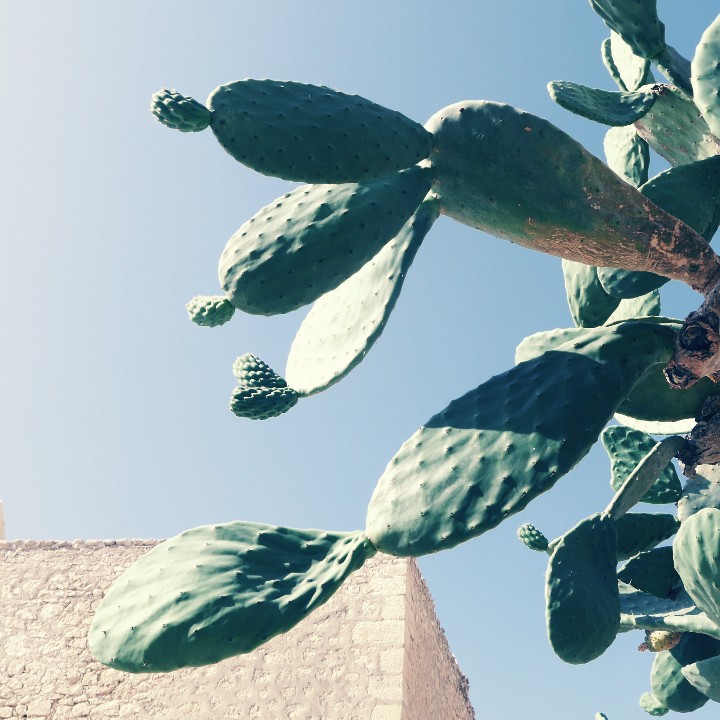
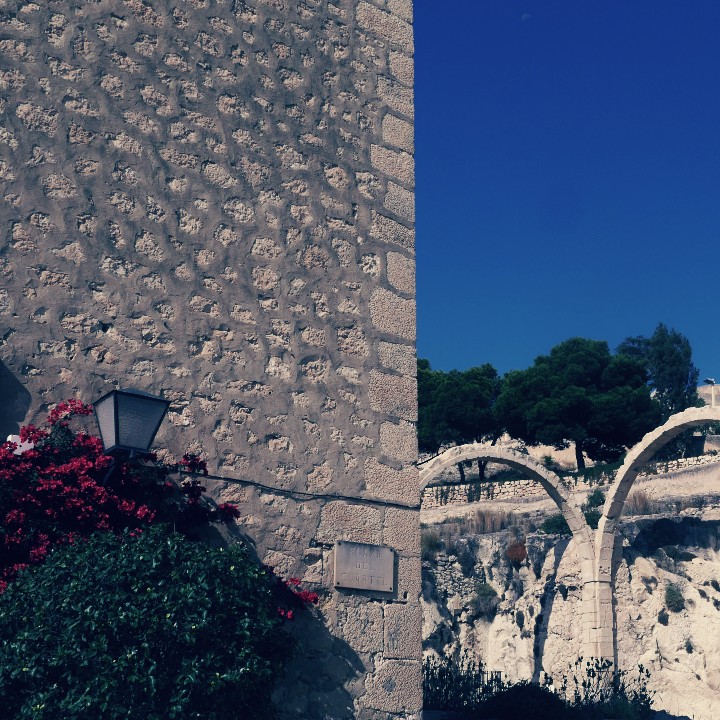
The castle of Santa Barbara is divided into three distinct enclosures.
The lower enclosure, where you enter the complex, was built during the eighteenth century and houses the Revellín del Bon Repós and a large white marble shield rescued from the ruins of the Royal Consulate of the Sea, which was destroyed by an explosion in 1943.
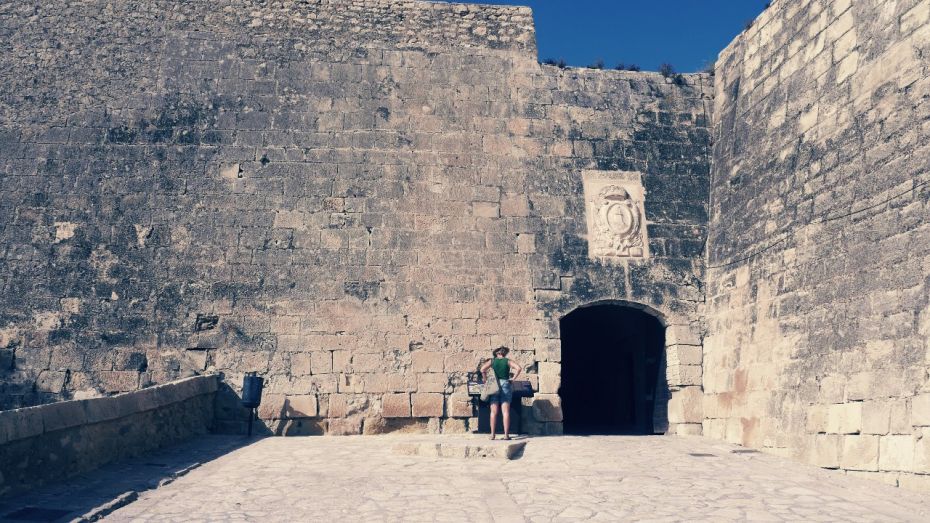
Further uphill are the most important dependencies of the expansion committed in the sixteenth century; the hall of Philip II, the old Troop Corps, the Patio de Armas, the ruins of the hermitage of Santa Barbara and the Baluarte de la Reina (Queen’s Bastion).
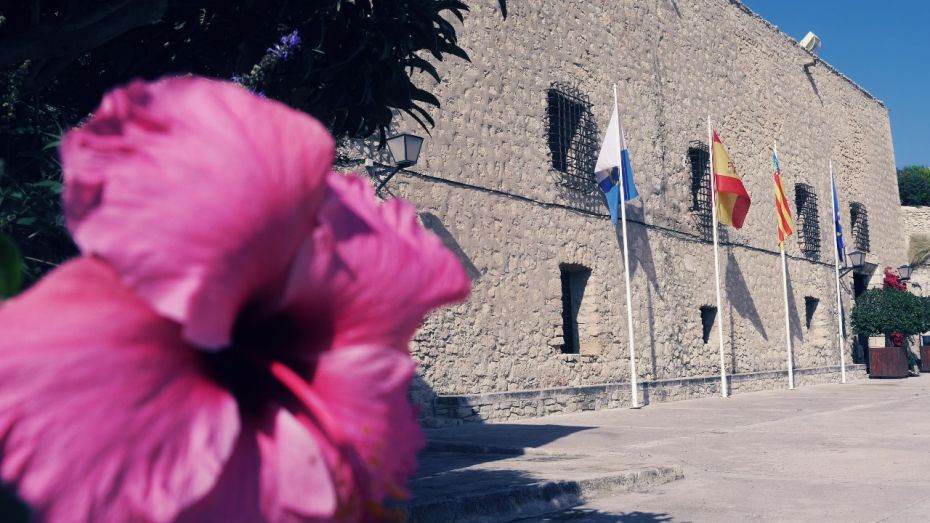
On the top of the mountain is the area known as “La Torreta,” the oldest of the complex and where the tower of homage is located. Here, you can also find different enclosures, such as the Bastion of the English, Engineers Park, Noble Hall, and the Governor’s House.
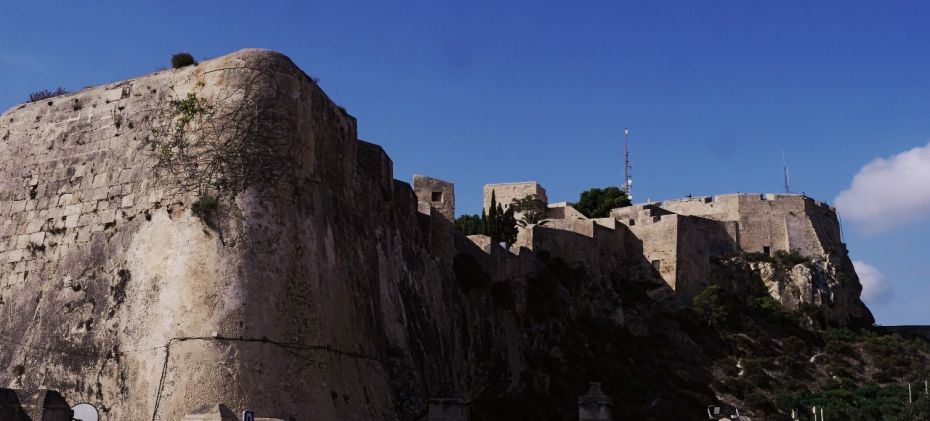
The esplanade of La Torreta is called “Macho del Castillo” and is where the old citadel was located.
Santa Bárbara Castle: The Best Views of Alicante
While visiting this Alicante fortress is worthwhile for its history and architecture, the main reason to climb the castle of Santa Barbara is to admire the fabulous views of the city and the Mediterranean Sea from its walls, courtyards and trails. The grounds surrounding the castle of Santa Barbara offer the best free views of Alicante.
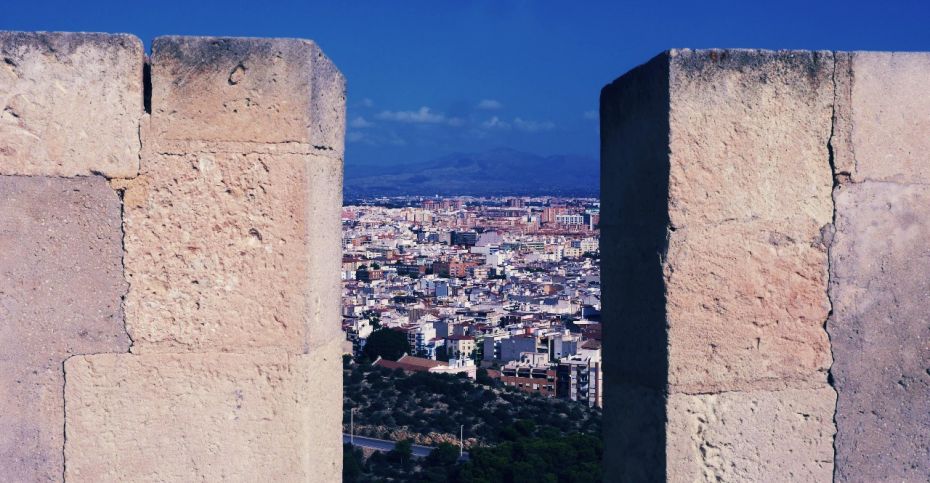
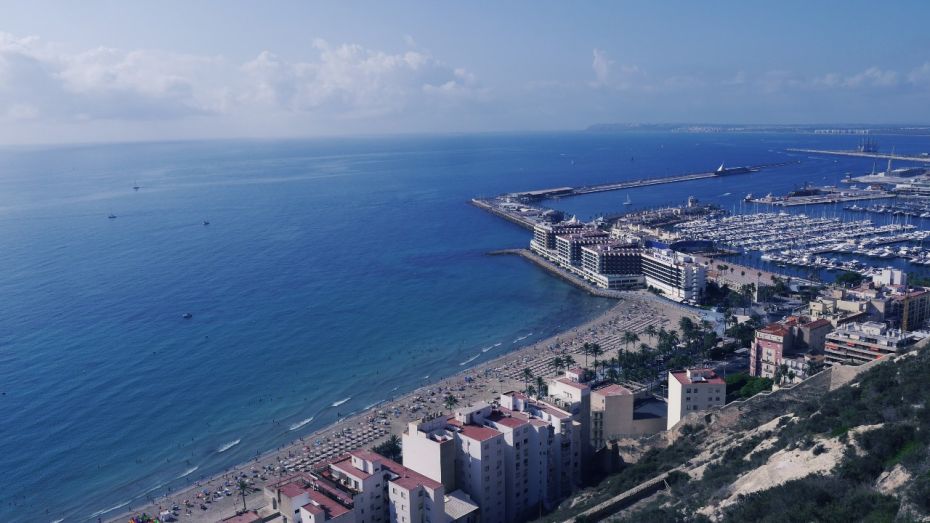
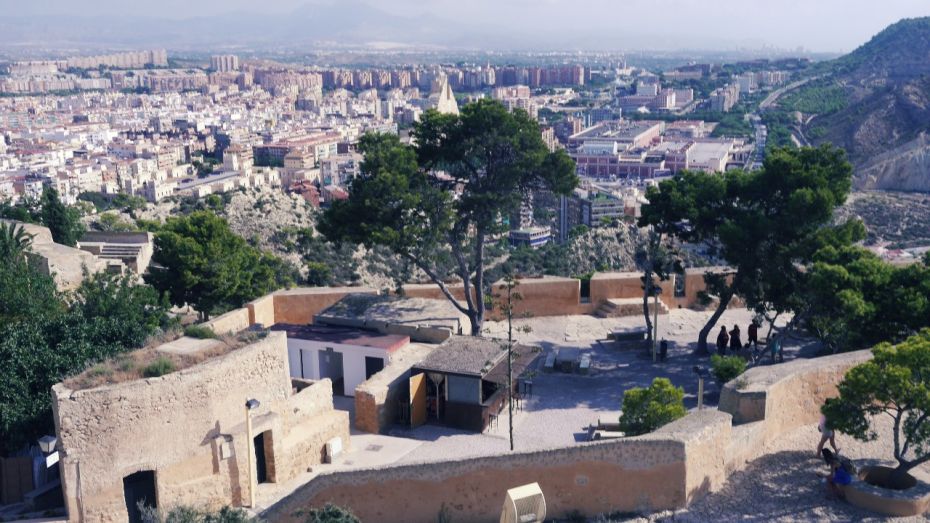
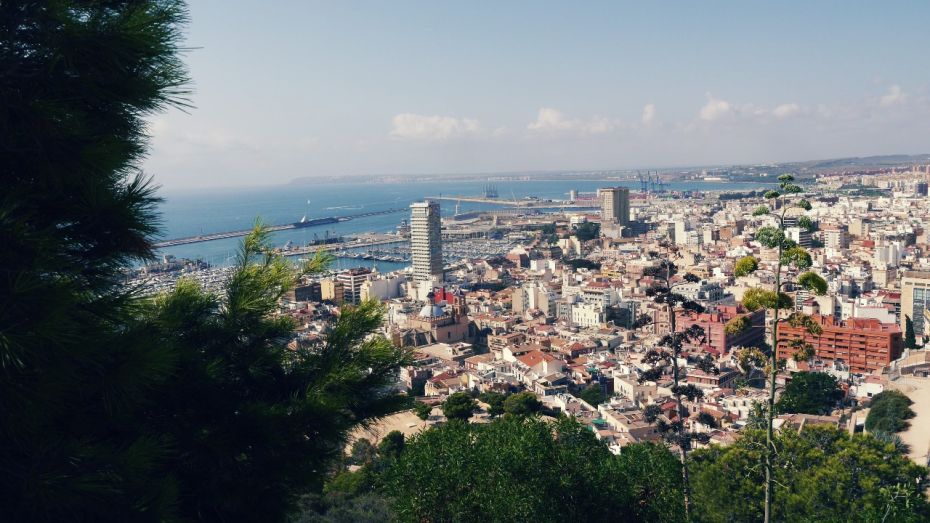
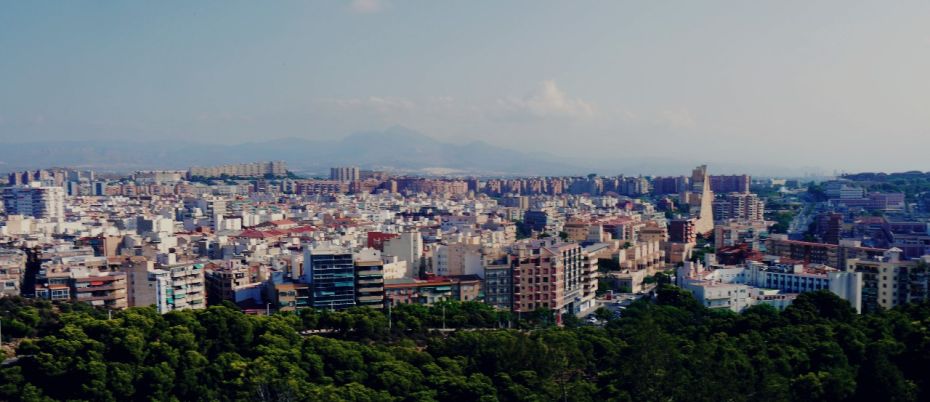
Museo de la Ciudad de Alicante (MUSA)
The Alicante City Museum (Museu de la Ciutat de Alacant—MUSA) is located in Santa Barbara Castle and consists of five rooms complemented by the Aljibe (historic cistern).
In the Corps of Engineers building, which serves as a reception and visitor information center, archaeological remains and interactive exhibits on the history of the city are on display. The old hospital building hosts the exhibition “Alicante transfixed by the Mediterranean”, which talks about the city’s connection with the sea and includes archaeological and ethnological materials. The Long Hall hosts the exhibition “Stories and People”. For its part, the Mine Rooms or Caves of the English host, “The Explosion of the Mine,” focused on an episode of the War of Succession from 1701 to 1713.
The old dungeons under the parade ground can only be visited with a guide as part of the guided tours offered by the fortress.
Santa Bárbara Castle: Plan Your Visit
Alicante has tourist guides accredited by Turisme Comunitat Valenciana. Their guided tours allow you to discover the city and the castle of Santa Barbara.
How to climb Santa Barbara Castle
Due to its location at a high altitude and its dramatic location next to the Mediterranean Sea and the historic center of the city, the Castle of Santa Barbara is the best panoramic viewpoint of Alicante.
There are four main ways to access the castle: by elevator, walking, public transportation, or car.
Getting to the castle of Santa Bárbara on footThe more athletic visitors can choose to walk up through its serpentine paths, either through the Santa Cruz neighborhood along the walls, along the Raval Roig, or along the Castle road, which connects the fortification with Calle Vázquez de Mella and Avenida Jaume I to the north.
The option through the Santa Cruz neighborhood is the most scenic route and offers the best views of Alicante.
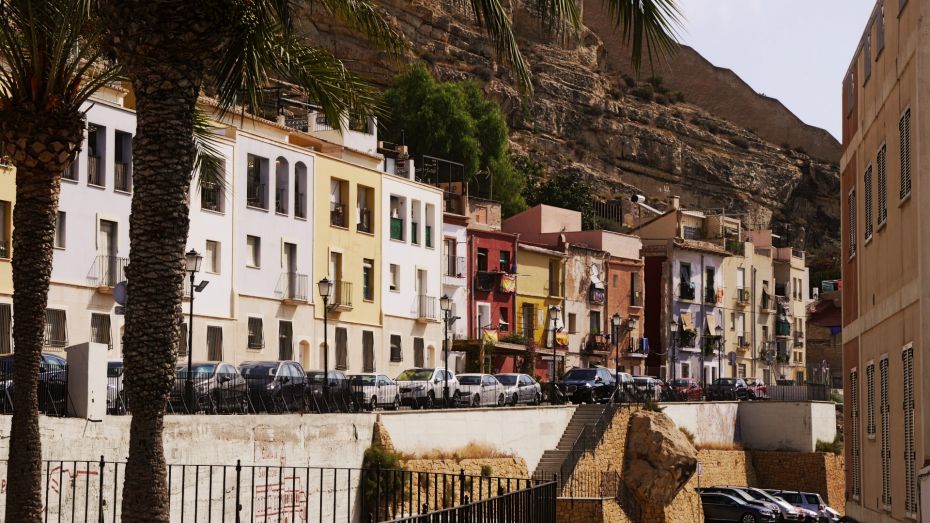
This route connects directly with the main street and crosses the old heart of the city and the Parc de L’Ereta to connect with the castle walls.
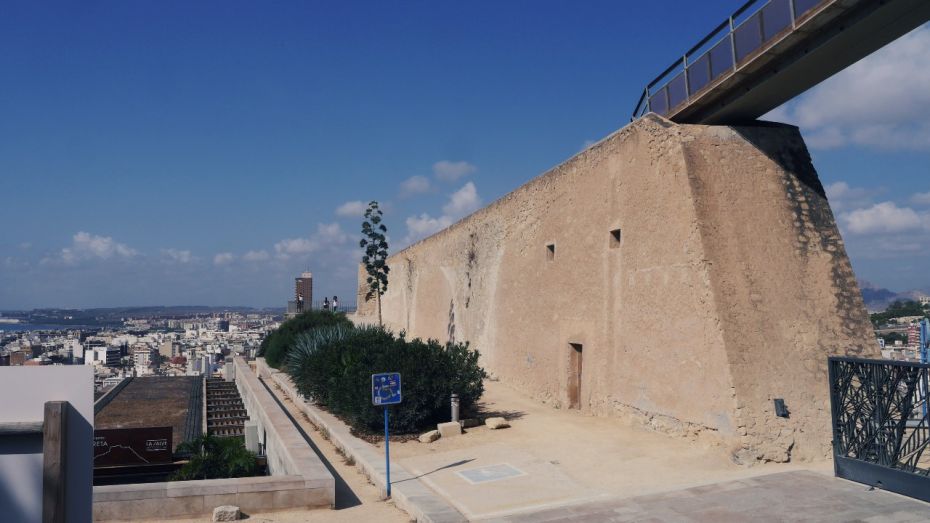
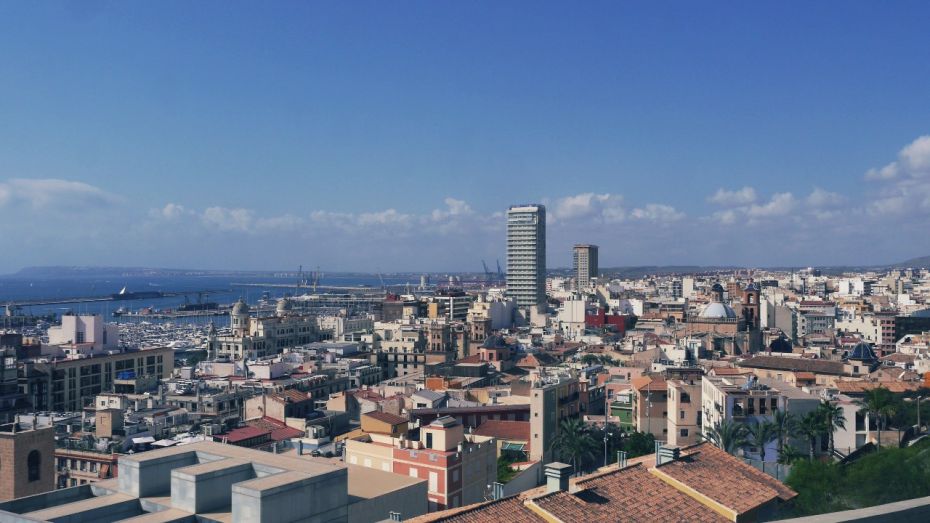
Having said all this, for those for whom a hike uphill under the Mediterranean summer sun does not sound appetizing, there are several much easier and quicker options for climbing the castle.
How to get to Santa Barbara Castle by public elevatorOne of the easiest ways to go up to the Castle of Santa Barbara is through the public elevator located in front of the Postiguet Beach, on Juan Bautista Lafora Avenue.
The ticket price (at the time of this article’s publication) is 2.50 € round trip. The Santa Barbara Castle elevator is accessed through a long tunnel (over 200 meters) that penetrates the rocky slope of Benacantil.
The elevator makes two stops, the first in a small temporary exhibition hall and the final one on the main esplanade of the fortress grounds itself.
Getting to Santa Bárbara Castle by bus or tourist busAlthough no Alicante city bus line goes directly to the top of the Benacantil, where the castle is located, route 2 connects the city center with the castle’s public elevator through the Jovellanos – Playa Postiguet stop. The stop is located on Carrer de Jovellanos around Postiguet Beach. Line 2 operates all year round between 06:00 and 22:30 with a frequency of between 10 and 16 minutes. The journey from Portal de Elche takes about 5 minutes.
The Turibus, Alicante’s tourist bus, makes a circular route around the city’s main attractions and stops at the castle, a few steps from the main entrance.
How to get to the castle of Santa Bárbara by private car or taxi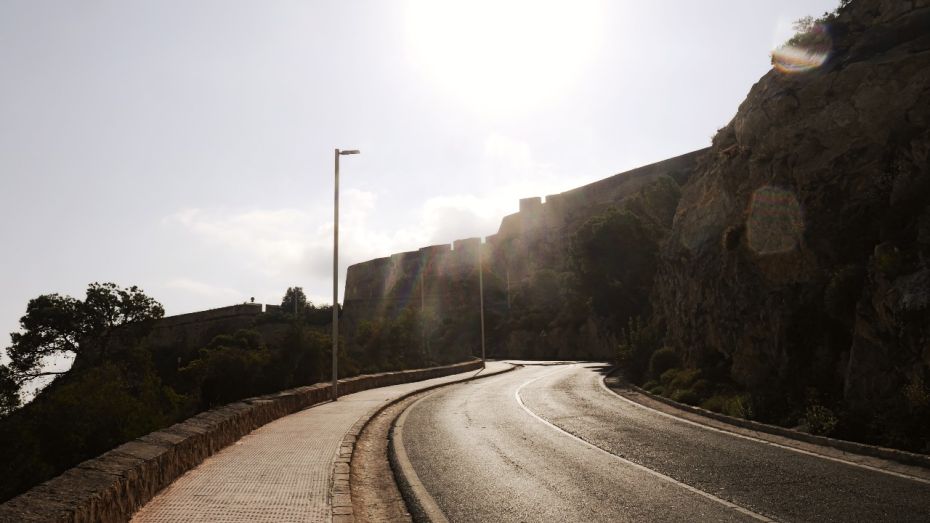
If you are traveling by car, the easiest way to reach the castle of Santa Barbara is through Castle Road. This winding road, the only street that crosses Mount Benacantil, connects with Calle Vazquez de Mella, on the northeast side of the mountain. You can rent a cheap car in Alicante here.
Another easy way to go up to Santa Barbara Castleis by cab or through mobile apps like Uber.
If you decide to go up to the castle of Santa Barbara by car, a good option is to walk down through the walls of the Santa Cruz neighborhood. The way down is less strenuous and the excellent views make it worth it.
Castell de Santa Bàrbara: A Brief History
As we mentioned above, the Castle of Santa Bárbara has its origins in the 9th century, during the period of Muslim rule over the city. From this time date the excavations of the Alcazaba and the first bulwarks located at the summit of Mount Benacantil.
On December 4, 1248, the feast day of Saint Barbara, Prince Alfonso of Castile, future King Alfonso X the Wise, took the Alcazaba. Alicante thus returned to Christian hands.
In the 16th century, expansion and fortification works began on the castle and by 1580 most of the dependencies that we see today were completed. The castle suffered severe damage in 1691 and subsequently during the War of Succession when it was briefly in English hands.
The last military action suffered by the castle occurred in 1873 when the frigate “Numancia” attacked the city.
The castle was finally disarmed at the end of the nineteenth century and remained out of use until the mid-twentieth century.
In 1963, after extensive restoration work, Santa Bárbara Castle was opened to the public. That year also saw the inauguration of two elevators that connect the fortress with Jovellanos Avenue in front of Postiguet Beach.



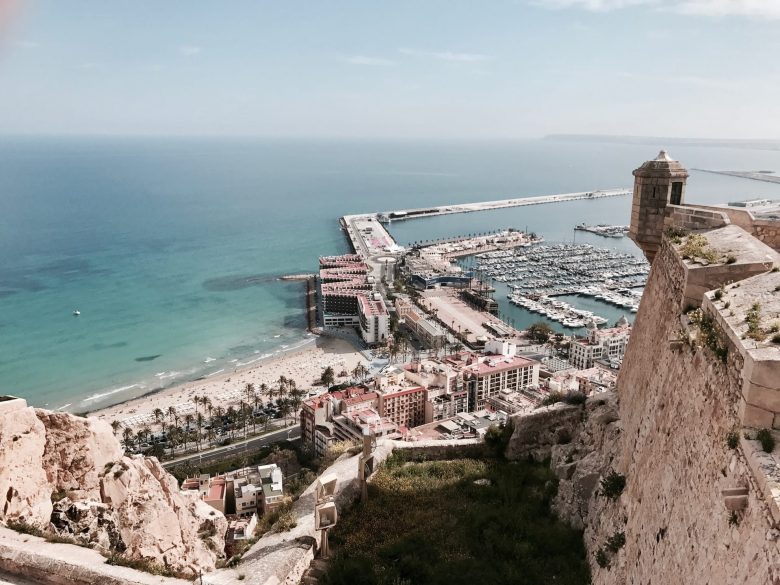



















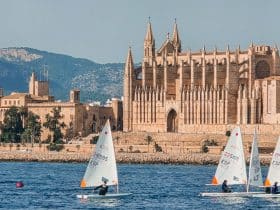
Leave a Reply
View Comments